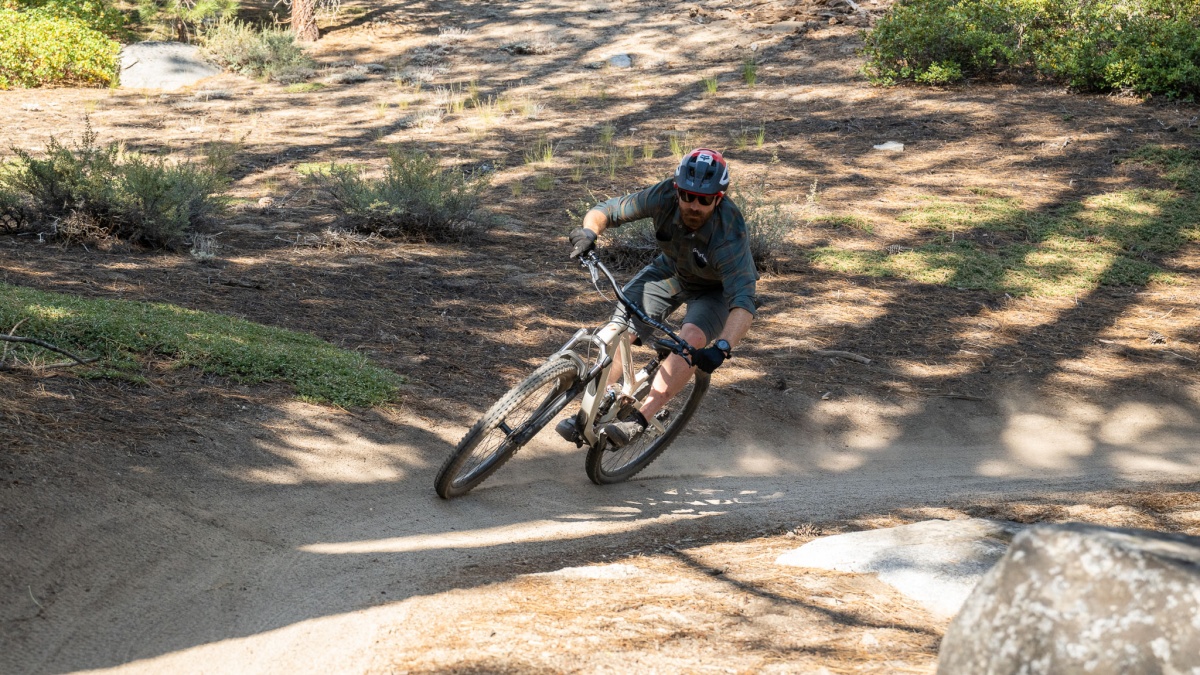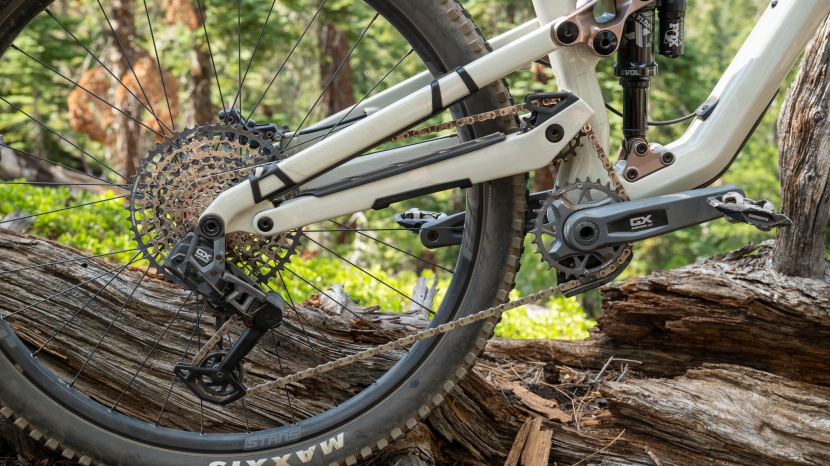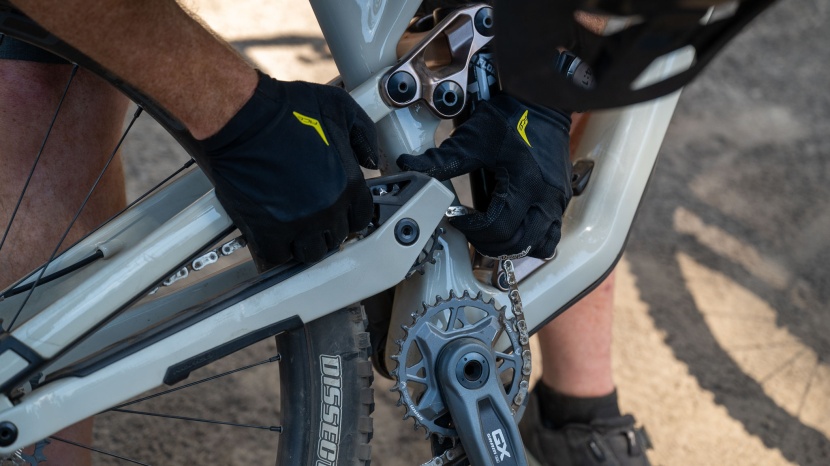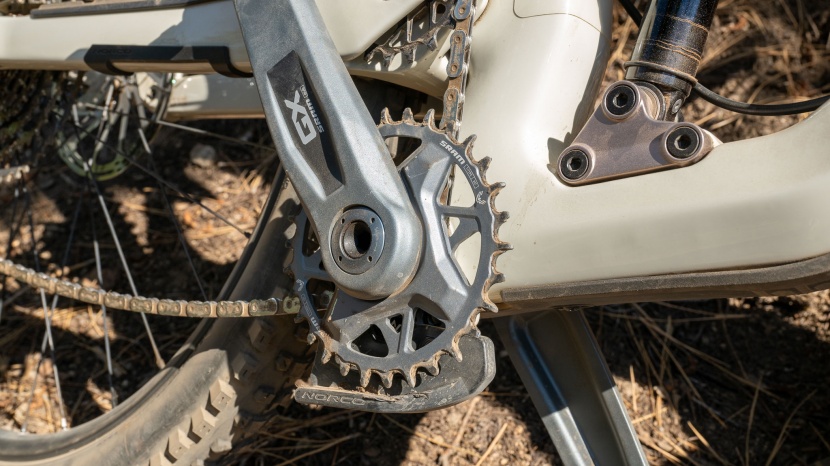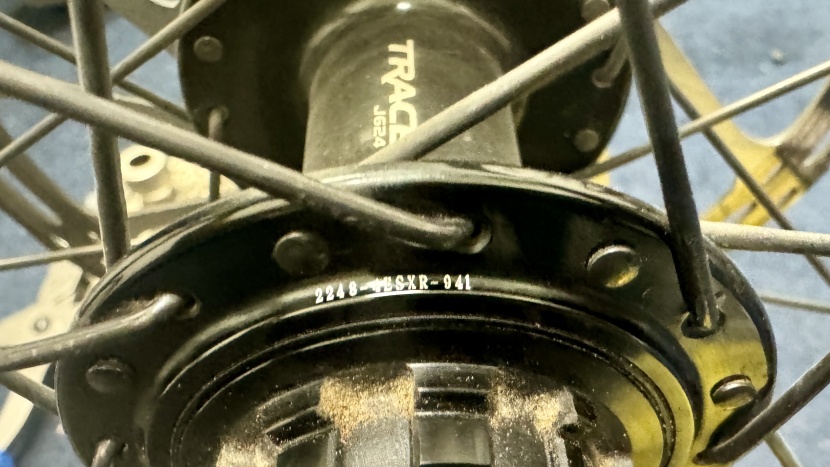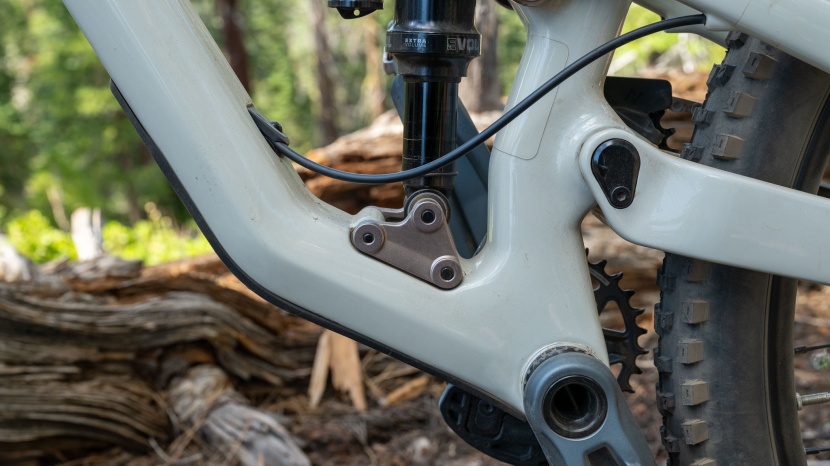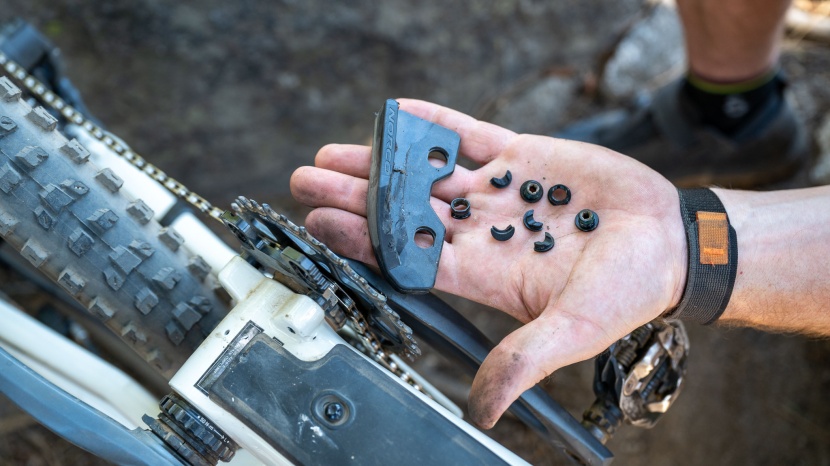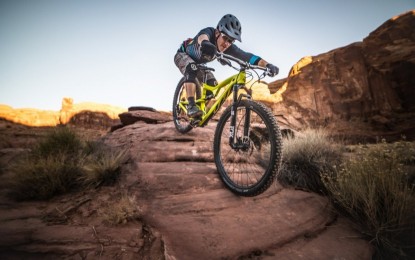Norco Optic C2 Review
Our Verdict
Compare to Similar Products
 This Product
Norco Optic C2 | |||||
|---|---|---|---|---|---|
| Awards | Best Aggressive Trail Bike | Best Overall Trail Bike | |||
| Price | $6,999 List $6,999 at Evo | $7,199 List | $5,500 List | $5,999 List | $2,999 List |
Overall Score  |
|||||
| Star Rating | |||||
| Bottom Line | A unique riding trail bike with aggressive geometry but a versatile feel. The suspension design has some benefits that linger in the shadows of its downside | The best gets even better, and the V3 Ripmo is the best all-around trail bike we've ever tested | Two models turned into one is a win for manufacturing efficiency; it's an excellent bike, but so are the two it replaces | Trek delivers everything we want in a modern trail bike with a highly adjustable frame and a confidence-inspiring ride | The aluminum framed Ibis Ripmo AF is the best aggressive trail bike you'll find at this price |
| Rating Categories | Norco Optic C2 | Ibis Ripmo V3 GX AXS | Specialized Stumpju... | Trek Fuel EX 9.8 GX... | Ibis Ripmo AF NX Eagle |
| Fun Factor (25%) | |||||
| Downhill Performance (35%) | |||||
| Climbing Performance (35%) | |||||
| Ease of Maintenance (5%) | |||||
| Specifications | Norco Optic C2 | Ibis Ripmo V3 GX AXS | Specialized Stumpju... | Trek Fuel EX 9.8 GX... | Ibis Ripmo AF NX Eagle |
| Wheel size | 29" or MX | 29" or MX | 29" or MX | 29" | 29" |
| Suspension & Travel | VPSHP - 125mm | DW-Link - 150mm | FSR - 145mm | ABP - 140mm | DW-Link - 147mm |
| Measured Weight (w/o pedals) | 33 lbs 1 oz (Size 3) | 31 lbs 12oz (XM) | 32 lbs 9 oz (S4) | 32 lbs 9 oz (Large) | 34 lbs (Large) |
| Fork | RockShox Pike Select+ 140mm | Fox Float 36 Grip X Factory 160mm | Fox 36 Float Rythym 150mm | Fox 36 Performance 150mm | DVO Diamond D1 160mm |
| Shock | Fox Float X Performanc Elite | Fox Float X2 | FOX FLOAT Performance with Specialized GENIE | Fox Performace Float X | DVO Topaz T3 Air |
| Frame Material | Carbon Fiber | Carbon Fiber | Carbon Fiber | Carbon Fiber OCLV | Aluminum |
| Frame Size | 3 | XM | S4 (Large equivalent) | Large | Large |
| Frame Settings | Missing Link | 29/MX | Headtube Nagle | Mino Link, Adjustable leverage | N/A |
| Available Sizes | 1-5 | S-XL | S1-S6 | XS-XL | S-XL |
| Wheelset | Stans Flow S1 w/ RaceFace Trace hubs | Ibis S35 Carbon with I9 hubs, 35mm ID | Specialized 30mm, Alloy hubs | Bontrager Line Elite 30, 30mm ID | Ibis S35 Aluminum rims with Ibis hubs, 35mm ID |
| Front Tire | Maxxis Minion DHF 2.5" 3C MaxxTerra / EXO / TR | Maxxis Assegai 3C MaxxTerra EXO+ 2.5" | Specialized Butcher GRID TRAIL T9, 2.3" | Bontrager SE5 Team Issue 2.5" | Maxxis Assegai EXO+ 2.5" |
| Rear Tire | Maxxis Dissector 2.4", 3C MaxxTerra / EXO / TR | Maxxis Minion DHR II 3C MaxxTerra 2.5 EXO+ | Specialized Eliminator GRID TRAIL T7, 2.3" | Bontrager SE5 Team Issue 2.5" | Maxxis Assegai EXO+ 2.5" |
| Shifters | SRAM GX AXS | SRAM AXS Pod | SRAM AXS Pod | SRAM GX Eagle AXS | SRAM NX Eagle |
| Rear Derailleur | SRAM GX Eagle AXS | SRAM GX Eagle AXS | SRAM S1000 | Sram GX Eagle AXS | SRAM NX Eagle |
| Crankset | SRAM GX Eagle T-Type DUB 170mm 30t | SRAM GX Eagle T-Type DUB 170mm 30t | SRAM S1000 170mm 32T | SRAM GX Eagle DUB 170mm 32T | SRAM NX Eagle DUB 32T |
| Saddle | Fizik Alpaca Terra, Wingflex | WTB Silverado Pro 142mm | Specialized Bridge Comp | Bontrager Arvada 138mm | WTB Silverado Pro |
| Seatpost | TranzX YS105 Dropper, 34.9mm 200mm | Bike Yoke Revive (160mm size XM) | X-Fusion Manic 190mm (S4/S6), 34.9 diameter | Bontrager Line Elite 170mm | KS Rage-i 150mm(Large) |
| Handlebar | Deity Ridgeline 35, 800mm, 25mm rise | Blackbird Hi Fi, 35mm, 30mm Rise, 800mm | Specialized 6061 alloy, 30mm rise, 800mm width | Bontrager Carbon RSL Integrated 820mm | Ibis 780mm Alloy |
| Stem | Alloy stem 35 40mm | Blackbird 35mm, 50mm length | Specialized Alloy Trail stem, 35mm bore | Bontrager RSL Integrated 45mm | Ibis 31.8 50mm |
| Brakes | SRAM Code R | SRAM Code RSC, 4 Piston | SRAM Maven Bronze | SRAM Code R | SRAM Guide T 4 piston |
| Measured Effective Top Tube (mm) | 617 | 630 | 624 | 627 | 631 |
| Measured Reach (mm) | 472.5 | 478 | 475 | 485 | 473 |
| Measured Head Tube Angle | 65-degrees | 64.5-degrees | 63.5-65-degree (adjustable) | 63.5-65.5 (adjustable) | 64.9-degrees |
| Measured Seat Tube Angle | 77-degrees | 76.5-degrees | 76.5-degrees | 77.3-degrees H/76.8-degrees L | 76-degrees |
| Measured Bottom Bracket Height (mm) | 342 | 344 | 337 H / 330 L | 342 H/338 L | 340 |
| Measured Wheelbase (mm) | 1226 | 1249 | 1244 | 1250 | 1239 |
| Measured Chain Stay Length (mm) | 435 (varies by size) | 436/433 | 435 (S3-S4) | 440 (varies by size) | 435 |
| Warranty | Limited Lifeti | Lifetime | Lifetime | Lifetime | Seven Years |
Our Analysis and Test Results
There was a lot to like about the outgoing Norco Optic with its 4-bar rear end and playful geometry. When we reviewed it, we found the bike to be versatile, well-priced, and an exceptionally adept descender. The new Optic takes on an entirely new shape with its high-pivot design and corresponding drivetrain routing. Norco sought to use the VPSHP suspension layout to give the bike more rearward axle movement. This gives the bike a feel of having a bit more travel than it does, as the rear wheel moves up and away from the bottom bracket, clearing obstacles with greater ease.
Should I Buy This Bike?
This segment of bikes is our favorite to ride through summer in the Sierra Nevada mountains. Trail bike geometry with a touch less travel gives us the efficiency and playfulness we find so rewarding and generally makes the climbs feel less taxing. Not only does the new Optic have fairly large shoes to fill due to the success of the outgoing model, but it also has something to prove. It needs to prove the effectiveness of this suspension design and show us that it's worth the extra weight and complications of the drivetrain. The new Optic is a fun bike with respectable numbers, but in short, it fails to convince us that its high-pivot design provides tangible benefits, and perhaps of greater importance, the new design creates issues that we thought were long since solved.
Frame Design
The updated all-carbon 125mm Optic frame moves the chainstay way up the seat tube to create this high pivot dynamic. On the outside of the high pivot is an I-track configured 18T idler pulley that helps manage chain growth. The idea behind the VPSHP suspension layout is to increase rearward axle movement while the idler pulley also fights pedal feedback. The shock is mounted between Norco's Missing-Link linkage that pivots just in front of the seat tube and bolts to the top of the downtube. Swapping the Missing-Link hardware allows you to run a different rear wheel and keep the geometry in its sweet spot.
The Optic is available in 5 sizes with 29" wheels and five sizes using MX wheels. Norco uses a proprietary sizing system that is similar to Specialized's S sizing. Our test bike was a size 3 with a 472.5mm reach on 29" wheels. If you're unsure of the wheel configuration you want, you can go for both by adding a Missing Link Kit and a second rear wheel. The effective chainstay length, or rear center, measures 429mm, giving the bike a wheelbase of 1226mm. Speaking of wheelbase, the rear end of this bike lengthens under compression, and that causes the rear center to grow; the overall wheelbase still gets smaller at the bottom of the travel, and the rear center grows while the front center shrinks. This changes the rider's center of gravity, and our testers found it somewhat disconcerting. All sizes of this bike feature a 65-degree headtube angle while the seat tubes get steeper as the frame size increases; our size 3 has a 77-degree seat tube angle. This helps keep taller riders in front of the rear axle on steeper trails. The seat tubes are kept short, allowing riders to utilize longer droppers; ours measured 385. The threaded bottom bracket sits at a modest 346mm and uses a chain guide at the bottom of the chainring that is adjustable for chainrings between 30-34T. Our test bike had a frame weight of 6.7 pounds without the shock.
Design Highlights
- Carbon Fiber or Alloy frames
- 29" or MX wheels
- VPSHP suspension
- Designed around a 140mm fork
- Internal cable routing
- Integrated high-pivot pulley and lower chain guide
- Threaded bottom bracket shell
- Chainstay and seat stay protection
- SRAM UDH
Downhill Performance
Our initial thoughts on this bike's descending prowess were quite positive; the geometry lends itself to a playful yet rowdy disposition for a bike with this much travel; it punches above its weight. The rear end feels like it has more than the stated 125mm of travel, but we verified this by measuring the rear axle path. If you wheelie or manual into an obstacle, the bike gobbles it up; there is no square edge feel that travels into your drivetrain. There is a strange feeling you get, particularly in a G-out situation like you might have in a high hard corner. When the suspension compresses, the rear center grows. At full compression, it extends by 30mm, and since your front center is shrinking, you're suddenly not exactly centered on the bike. While this can give the bike a supple, trail-slayer kind of feel, the rear wheel moving backward can make it feel like the bike is slowing down.
We rode the Optic on a wide variety of trails, many of which seemed more appropriate for bikes with more travel, and it rode how we would expect a bike with these geometry numbers to perform. What we found surprising (and unfortunate) is how difficult it was to keep the chain on. We've tested dozens of bikes using SRAM Transmission, and ever since the days of Narrrow-wide chainrings, we've eschewed chain guides on all but our biggest bikes. This seemed to be a problem that had been solved, and dropped chains are kept back there with memories of pinch flats and headsets that came loose. In rough terrain, we had the chain jump off of the idler pulley, which created an unfortunate rest stop as we wrestled it back onto the pulley and within the guide. Sometimes, we'd have to unbolt the cover to get the chain back on the pulley, requiring a deeper intervention and more time.
At other times and in varying terrain, we had the chain come off of the lower guide. Getting the chain back on the chainring in these situations was considerably more involved. The chain guide can be adjusted for use with three different-sized chainrings and, as such, is made up of a bevy of small parts to accommodate those changes. Dealing with all of the small parts on the side of the trail in gloves was less than ideal; this is the type of procedure you want to do with a bike stand and perfect lighting.
In many ways, all of the bike's performance attributes lay in the shadow of these issues. It clears obstacles with a uniquely athletic feel, but then you're stuck putting your chain back on. We can talk about the bike's kinematics (good) and the braking performance (also good), but overall, this doesn't seem like an improvement over the previous model. The new model feels more capable and fearless on the way down, but the small performance gains don't compensate for the mechanical issues that this drivetrain layout creates.
The GX Transmission is a solid drivetrain and one we've come to love over the past year or so of testing. Until riding this bike, we've never dropped a chain from the T-type SRAM chainrings. Due to the location of the idler pulley, there is significantly less chain wrap, which is likely part of the issue with this bike. Code R brakes mount to a native 180mm mount out back and use an adapter to reach the 200mm rotor up front. The brakes performed flawlessly and always kept the Optic's speed in check. The Stans Flow rims are amongst our favorite alloy hoops and give us solid footing with no burps. The wheels were machine-built and not finished very well, causing a lot of break-in and detensioning of both wheels. An hour in the truing stand with a tensiometer and spoke wrench put them in perfect shape. After about ten rides, the RaceFace Trace rear hub failed and wouldn't coast properly. RaceFace was great about the warranty and quickly rebuilt our wheel with a new hub that we hoped would somehow solve the drivetrain issues, but that wasn't the case. Problems aside, the Trace hubs feature a lackluster 10-degree engagement. You might be able to make a case for low engagement countering backlash from the drivetrain, but it was a negative attribute as we clawed away at technical sections.
The TranzX YS105 dropper is adjustable, allowing users to get the maximum amount of drop for their height; this is a nice touch; we were able to utilize a full 200mm of drop on our size 3. The cockpit on this bike is well appointed; Deity's Ridgeline Alloy handlebar and DMR Deathgrips provided excellent steering accuracy and a fair bit of comfort.
Climbing Performance
Climbing on the Optic involved significantly more bob than we would have expected, chugging up a grade without using the shocks compression dampening switch, which was reminiscent of an old single pivot bike and the inherent inefficiency it provided. We used Norco's awesome Ride Aligned suspension tuning tool to find a starting place and toyed with our settings from there, but a supportive pedaling platform was continually out of our reach. While the seat tube angle is sufficiently steep to keep you in the right spot, the bike's kinematics leave you feeling less efficient. The bike excels in getting up and over obstacles; the high pivot feels like it helps the rear end get out of the way and not hang up where a bike with similar travel numbers might feel stuck or reluctant. The VPSHP rear end rides like it has more travel than it does, and while that's great for slaying technical downhills, this isn't a positive attribute while climbing.
The effective 77-degree seat tube angle puts you in an ideal climbing spot; even on punchy, steep sections, we never felt our weight drop behind the rear axle. There were times that the Maxxis Dissector rear tire felt like a tank track, giving unreal traction, but it came at the price of efficiency. The movement in the rear end provided traction but also sapped the rider's energy. As the rear wheel moves backward in its travel path, there are times that it doesn't just pop over obstacles; it can languish and make the bike feel sluggish. When testing how the bike wheelies over obstacles, we discovered a unique feeling from the high-pivot design where the bike feels like it clobbers the terrain and absorbs odd-shaped obstructions much better than most.
The Optic rallied the hard scramble sections of the trail, and we were able to push over some impressive obstacles. On sections that were anything less than technical, we used the compression switch on the shock to calm the rear end down, which had the desired effect of eliminating pedal bob but also cost us traction. With the shock in the open position, the bike tended to wallow and sag into its travel; the desired anti-squat just wasn't there.
Photo Tour
Value
The Optic is currently available in two builds: as a complete carbon bike or as a frameset in alloy or carbon. Our C2 test bike is priced at $6999, and the better-appointed Optic C1 comes in at $9099. The carbon frameset will run you $3849 while the alloy frameset can be had for $2099; both come with a RockShox Vivid 2 Select Plus. If the performance of this bike were up to snuff, we'd only take issue with the quality of the wheels, but dropping 7k for a bike that can't keep the chain on isn't a value proposition. The RockShox Pike Select Plus fork with 35mm stanchions and Fox Float X shock seem to be the right choice, but a 36mm fork, like the one spec'd on the C1, would have also been a solid choice up front. While it doesn't cost much, this is one of the few mountain bikes we've purchased that actually includes a front fender; we hope that is a trend that catches on.
Ease of Maintenance
Assessing a bike's ease of maintenance isn't easy when we only spend a few months on it. We go through the frame thoroughly and measure tolerances, check bearings, assess seals, and make some educated guesses. We take special note of the issues we encounter and can make some assertions. As lifelong bike industry wonks, engineers, and mechanics, we take a critical look. After disassembling the frame, pivots, and hardware and measuring them, you can see that this isn't Norco's first rodeo. The bike uses quality bearings and seals, has tight tolerances, and has a solid-looking carbon layup.
From an experiential standpoint, the bike gave us more trouble than we were comfortable with. Being unable to keep the chain on reliably is an absolute deal breaker. Our drivetrain issues undermined the bike's performance in every way. Even if the VPSHP rear end saved us a minute on our downhill test course, having to stop and endure a far more lengthy repair process negates any benefits that may have happened.
Other Versions
Norco offers the Optic in five sizes and two build kits starting at $6999. We imagine there will soon be a complete Aluminum bike in the sub-$5000 range. Norco also builds a similar bike with more travel; the Sight offers 150/160mm of travel and starts at $4999. A high-end spec of the Sight sells for $7499 and gets you a coil shock, Fox Factory 36 fork, and Raceface Vault hubs.


